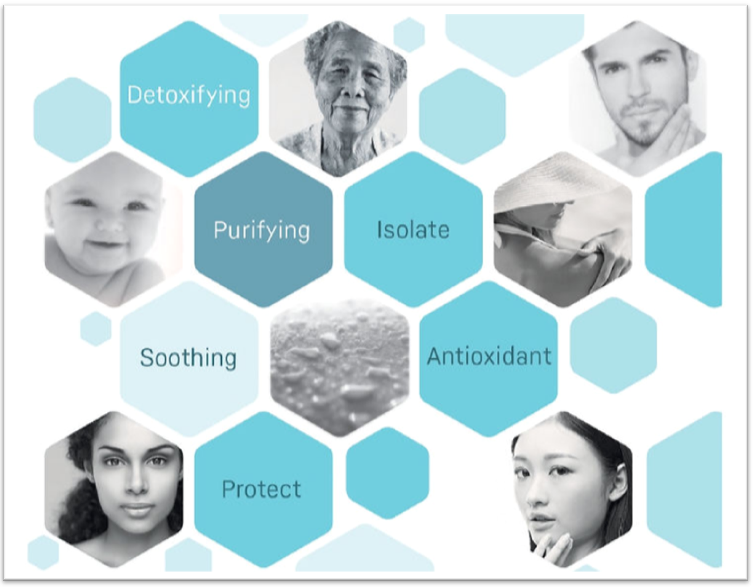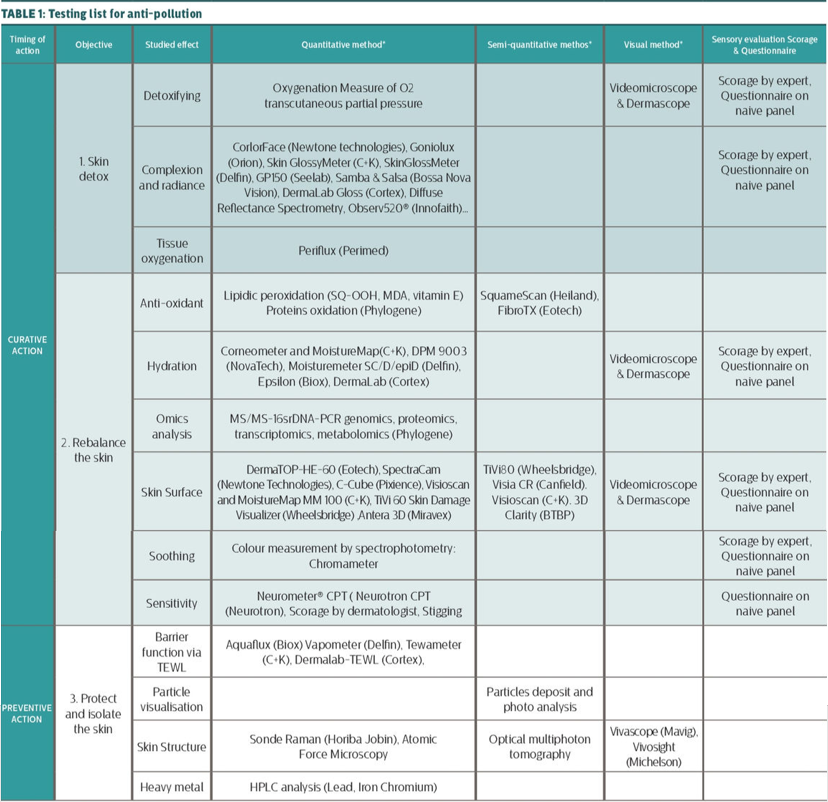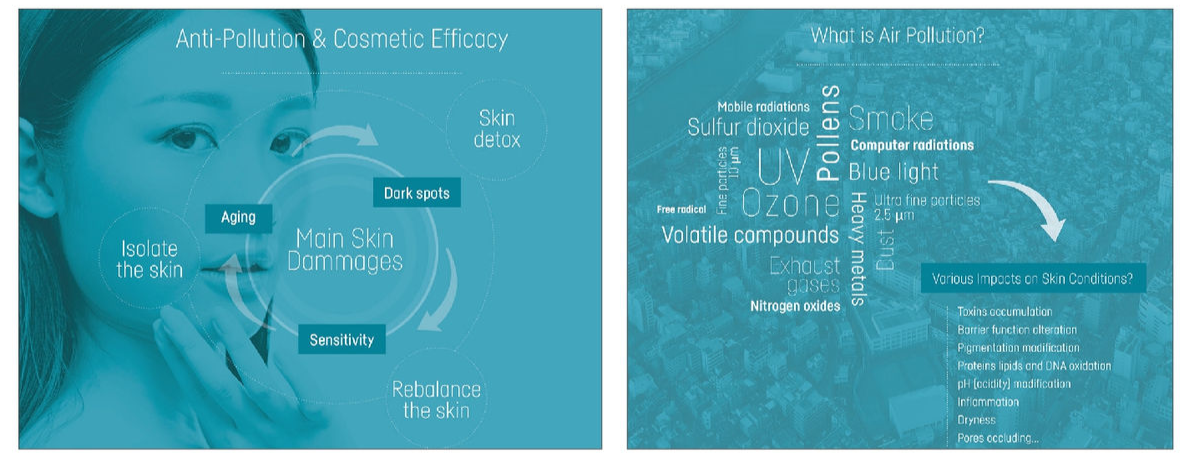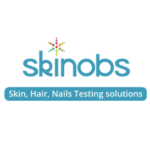Anti-pollution Effect: a Complex Claim Objectivation via Personal Care Magazine
13 April 2021
Read the publication from Personal Care Magazine
Since the spring of 2020, the global health crisis related to COVID-19 has placed the pollution risks of megacities as a secondary concern. Should viruses be considered as an integrated part of pollutants? They belong to the large family of microbiota such as micro-organisms, bacteria, viruses, fungi, yeast. Hand washing with soap or hydroalcoholic gel, an essential barrier to virus contagion, has become a way of life around the world.
The bactericidal efficacy of cosmetic hygiene products is evaluated in vitro by following the recommandations of bactericidal tests by distinguishing handwashing products by friction and quantifying the reduction in the viability of Escherichia coli. As for the antiviral activity of a hygiene product, its objectivation seems to be pharmaceuticals.
For the face, the wearing of masks, sometimes amouting to many hours daily, becomes a new parameter to be taken into consideration in assessing the tolerance and effectiveness of cosmetic products. The resulting change in the skin ecosystem in significant and can be akin to close pollution, due to the promoted development of bacteria, friction of tissue, increased CO2 as well as temperature and sebaceous secretion.
For hands, too much use of hydro-alcoholic gels can also cause skin stress. These leave-on hygiene products promote hand dehydration, which is often put to the test during the winter.
Clinical trials can be conducted under normal conditions of use to assess the consequences of these new uses through :
- Use tests and self-assessment
- Tolerance tests and expert score evaluation
- Sensory analysis tests with trained of naïve panels
- Biometrological tests to measure the different parameters of skin physiology and in particular the evaluation of the skin barrier function and TEWL, colour, sebum level, hydration, imperfections…
These are the immediate restorative effects that will be studied and the protective effects over a day or a few days of use. The protocols should be adapted to consumers of the skin care product, age, lifestyle, skin type…
Pollution has been a major environmental risk to public health in major megacities around the planet for many years. A lot of human activities become a stress factor for nature and human living conditions which lead to various problems such as : respiratory troubles, DNA changes, premature ageing of the skin, among others.
The pollution included in the ‘Exposome concept’ has various origins: agriculture, energy production, natural phenomena (volcano eruptions, road transport, fuel combustion, methane synthesis… and the list is so long!).
The classic pollutants
Today, the majority of pollutants which impact good skin condition are found in air. We can also think that water, soil, and food pollution can also affect the skin. MyExposome identified 1400 substances after one week of a normal life pollution exposure. Environmental Protection Agency (EPA) of the US classifies pollutants into 5 categories :
- The heavy pollutants (lead)
- The fine (10um) and ultra-fine (2.5 um) particles
- Nitrogen oxides (industrial plants)
- Ozone (ground level)
Thus, air pollution is composed of two main types of primary pollutants: Particulate matter (PM), and Gases (O3, CO2, CO, SOx, and NOx) which are also named volatile organic compounds (VOC).
What are the consequences of the pollution on the skin physiology?
One of the effects of air pollution combined with ozone and UV rays on skin is the generation of free radicals and the consequences of inflammatory reactions on the performance of the skin barrier. The oxidative stress generally causes an imbalance between the formation and removal of ROS and RNS and a decrease of the natural antioxidant protection.
The endogenous stress can induce an increase in the formation of glycated products which lead to the development of AGE (Advanced Glycation End) product. The AGE affects the quality of the extracellular matrix by destroying the collagen. The skin adjusts permanently to the environmental changes and counteracts the pollution influences on its physiological balance.
The chronic stress induced by environmental pollution alters the integrity of the skin barrier and can generate skin disorders such as : dermatitis, sensitivity, dehydration, pigmentation disorders. Chemical pollutant particles release toxic compounds that may damage the skin at deeper level.
*Retrieve the details of the methods and the testing Lab on the Skinobs platforms.
How to classify these harmful impacts in the short and long term?
The resulting skin disorders are caused by the oxidative stress of the pollutants:
- Short-term: Accumulation of toxins, alteration of the barrier function, a decrease of the skin resistance to UV, protein lipids, and DNA oxidation, modification of the [acid] pH, inflammation, occluding of the pores, dehydration, lack of oxygen, decrease of the cell turnover, depletion of antioxidants, sebum overproduction.
- Long-term: wrinkles, age spots, acne, dull and sagging, sensitivity
These skin damages could be summed up in a few words: ageing, dark spots, and sensitivity including multi-factorial consequences in the stratum corneum and the epidermis and dermis layer – DNA damages, protein carbonylation, enzymatic alteration, inflammation mediators, oxidative process, lipid metabolism, cell metabolism, dermis structure.
Skin care: 3 steps to combat pollution
Finally, the cosmetic ingredients or formulation have 3 main objectives to keep the skin pure:
- Skin detox with a curative action: cleansing, detoxifying, exfoliating, purifying, oxygenising
- Rebalance the skin with a curative action: soothing, moisturising, nourishing, pH regulator, sebo-regulator, complexion, microcirculation, anti-ageing, anti-sagging
- Protect and isolate the skin with a preventive action: bactericide, anti-UV/IR/anti-blue light, antioxidant, anti-free radicals, anti-particle, barrier integrity, anti-inflammatory, anti-spot.
How to assess clinically the performance of anti-pollution cosmetics and actives?
To evaluate the ‘anti-pollution’ performance of cosmetics, three criteria of the protocols are often considered: preventive or curative efficacy, short or long-term action, real life condition or controlled pollution conditions.
The product is applied under standardised conditions on the forearms with the opportunity of a non-treated zone or on the face. The subject can stay under in situ pollution environment in a polluted city.
For more standardised protocols, several CROs have implemented specific conditions of the application of the pollutants, under close chamber using standardised polluted dust-like 2.5 pm particles. Thus, the design of the study is adapted depending on the preventive or curative claims.
The following claims can be substantiated with the classical methods and devices for a short or long-term performance: bactericide, cleansing, detoxifying, purifying, soothing, seboregulator, pH regulators, soothing, moisturising, nourishing, anti-UV, anti-age spots, antioxidant, anti-free radical, radiance and skin complexxion, protect the skin function barrier…
For specific ‘Anti-pollution’ claims we have identified the following methods. Before any chemical analysis, specific samples of the skin are implemented, stripping (caution to the potential adhesive interaction), swabs or glass sticks:
Protection performance
- Heavy metal analysis (lead, iron chromium)
- Particle visualisation mimicking PM deposit
Antioxidant
- Lipids peroxidation (SQ-OOH, MDA, vitamin E)
- Proteins oxidation
Detoxifying
- Oxygenation Measure of transcutaneous partial pressure of O2
Skin complexion and radiance
- GlossyMeter (C+K), GonioLux (Orion Concept), Samba (Bossa Nova tech), SkinGlossMeter (Delfin), C-Cube (Pixience).
Inflammation
- Colour measurement by spectrophotometry.
For the “Anti-pollution” claims we have identified the following in vivo methods. Stripping (caution to the potential adhesive interaction), swabs or glass sticks are the different ways used to collect a superficial piece the skin.
In Vitro, cell-on-chip and ex-vivo testing, a reliable solution to study cutaneous pollution mechanisms
To address the needs for anti-pollution claims substantiation, the major testing labs also developed specific in-vitro and ex-vivo protocols that objectively evaluate skin exposure to several pollutants. These assays represent an ethical alternative to human testing when induced stresses are harmful: pollution, UV… They can demonstrate the effects in preventing pollutants from adhering to the skin surface, removing pollutants from the skin or in reducing their oxidative impact.
Beyond the duration of use that everybody would like longer and longer, 3D skin model – bioprint or not- and ex vivo testing present undeniable benefits for the anti-pollution evaluation through:
- The standardised assay conditions
- The various end points and their combination of assays with multiple action mechanisms (oxidation, ageing, UV stress…),
- The quantitative and illustrative results (histology, modelling, video).
Several types of pollution stress can be applied, either directly in the cell culture media or by spraying the pollutant on the assay support or in a chamber: Blue-light(400 – 470 nm) , UVA, UVB, InfraRed, cigarette smoke, ozone, heavy metals, volatile organic compounds, PM 2.5, particulate matters, cigarette smoke, inflammation mediators.
The main biomarkers that are quantified are numerous : Cell Proliferation, lipid metabolism, Carbonylated proteins, antioxidant defence markers, DNA damage, various proteins (barrier function, pigmentation or mitochondrial), inflammation mediators, or protease activity. The choice of the test models depends mainly on the studied mechanism of action.
Several methods of analysis can quantify or visualise the effect of ingredients or formulation on the cellular metabolism such as :
- Proteic and metabolic methods which includes Elisa, HPLC, CPG, Flow cytometry, Mass Spectrometry, Photometry, Western Blot, Radiobiochemichal… ,
- Morphology and imaging methods: 3DLive cell Imager, HTRF, Immuno-histo fluorescence, Immuno-fluorescence chemistry and imaging, electron microscopy…,
- Gene expression: Transcriptomic, RT-qPCR, qPCR-array,
- Multi-omics approach: proteomics, metabolomics…
What future for the anti-pollution testing?
The Exposome brings together the internal and external stresses of human life. Since 2020, the vision of anti-pollution has been expanded and now covers new fields such as: bactericide, hydro alcoholic gel stress and mask-wearing ecosystem. Actually, expect for bactericide claims there are no standardised guidelines in any countries. Regarding the consequences of the mask wearing, the CROs around the world adapt the design of the today studies to answer this new use and consumer requests.
A relevant protocol could give more information about the standardised or modelled conditions of pollution, the nature of the pollutants, the ethical considerations in case of clinical tests.
How many apps or websites are now available to test the pollution environment, and also to follow the COVID-19 situation?
For clinical evaluation, it seems that the innovations of sensors combined with A.I, the “nomad” way of testing, the “contactless” studies will support in adapting to the threat of the consumer personal care routine. The ultra-personalization trend with sanitary crisis will certainly influence the future of the new anti-pollution cosmetics development.
Beyond the biometrological measures and clinical evaluations to highlight the anti-pollution effects, it seems that the objectivation of emotions constitutes a new territory of tests. Through, among other things, conducted interviews, mood charts, eye tracking or verbal analysis for the behavioural aspect or through physiological measures such as: functional MRI of the brain, measurement of heart and respiratory rhythm, the dosage of salivary cortisol in others, innovative studies on the protection effects of pollution can be carried out. Their results will provide the most conventional allegations with a sensory and emotional approach, so much needed in these times of social distancing and barrier gestures.
Read the publication from Personal Care Magazine
Contact
Anne Charpentier, CEO,
Skinobs testing platform, France.
Tel.+33630089098











 Follow us on Linkedin!
Follow us on Linkedin!
You must be logged in to post a comment.